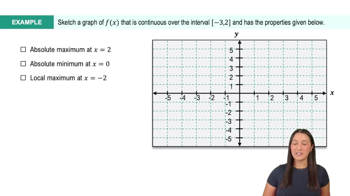Analyzing Functions from Derivatives
Answer the following questions about the functions whose derivatives are given in Exercises 1–14:
b. On what open intervals is f increasing or decreasing?
f′(x) = 1− 4/x², x ≠ 0
 Verified step by step guidance
Verified step by step guidance Verified video answer for a similar problem:
Verified video answer for a similar problem:



 7:32m
7:32mMaster Determining Where a Function is Increasing & Decreasing with a bite sized video explanation from Patrick
Start learning